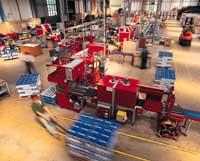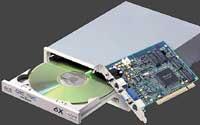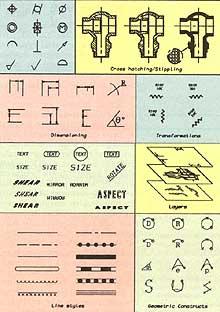Three-dimensional printer
2002/09/01 Roa Zubia, Guillermo - Elhuyar Zientzia | Urkidi, Leire Iturria: Elhuyar aldizkaria
The design of a product generates large headaches to the designer. Will it be easy to handle? Will it join the rest of the pieces? Does it cause problems when riding? All these questions must be answered before the product reaches the market. Rapid prototyping techniques are very useful.
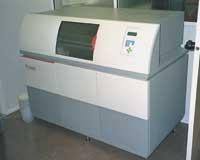
These techniques allow us to have in a very short time a piece similar to the one we have designed, a prototype. This prototype allows to analyze the shape, size and functionality of the part. In short, the goal is to decide whether the design is useful or not.
Rapid prototype systems were presented in the United States in the late 1980s. At first the processes were inaccurate and the materials were very limited, but since then great steps have been taken. In Spain, the Eibarrés Tekniker technology centre pioneered the development of these technologies and the work carried out was the basis of the subsequent work of the company Idelt. After six years of research, this new company opened in Elgoibar in 1998.
Prototypes
There are numerous prototyping techniques, depending on the part you want to make one or the other will be selected. If the objective is to know if it is aesthetically appropriate or not, it will suffice to create a conceptual prototype, that is, the material to be used will not be the one to be used later in the manufacturing process, but as proof it is very useful.
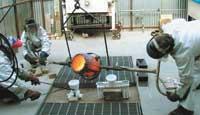
One of the techniques used by Idelt to develop conceptual models is the three-dimensional printer. This technology allows the designer to have in a few hours the piece he has just designed. To see it we will use an example: the goal is to create a bronze souvenir from a logo drawn on paper.
Printing process
To begin with, you have to enter the selected image on your computer, which can be taken from a photo, a plane or from the Internet, that is, from any two-dimensional image.
Then you have to give volume to the photo, that is, turn it into three-dimensional design. Standard software such as CAD are used for this purpose. These programs allow you to design images in three dimensions. Therefore, in this step the design is made. Subsequently, in the following steps, this piece is made through the process described. And if you have not achieved what you wanted to achieve, because the piece does not have the necessary characteristics, for example, it is returned to this step and the design of the piece on the computer is improved.
Before sending the information to the printer it is essential to create the STL file, which is the format used by rapid prototype technologies. From there you will read the geometric details of the piece.

Once the file is sent, the three-dimensional printer starts working. It works the same as other printers but using wax instead of working with ink. From the STL file you read the amount and location of the wax needed at any time and with this information the piece is made.
In our example, the result is a logo turned into a wax figure, that is, a conceptual prototype that serves to analyze the design. In this step lies the main advantage of this system. In fact, once here the process can be completed. If the part is not to your liking or has defects, you can make a new design and restart the process.
But you can go ahead and make other types of prototypes. Since the prototype is made of wax, a process that melts the wax can obtain a piece composed of another metal.
The prototype will be surrounded by a ceramic material for the manufacture of the mold. Once the mold is made, the wax will melt and the gap left will be filled with other material, steel, aluminum, etc. that the customer can choose. In our example we have chosen to make a reminder in bronze, but in this process you can use any material that can be injected into a mold.
The mold is filled with molten metal and when it cools it opens and from there comes the finished bronze piece. Through this system this piece will have the necessary characteristics, that is, you will not have design problems. In the traditional methodology, however, analyses should be performed on the bronze piece. In case of failure, the repetition of the process would be too expensive with bronze.
Resin shift
Stereolithography or SLA is another rapid prototyping technique. The most significant difference with respect to the three-dimensional printer is the use of the laser. This system has also been called a magic machine, as it turns liquid plastic into a three-dimensional solid body. Once the design is completed, the STL file used by this technology is generated and sent directly to the machine.
As soon as you put it into operation, the laser beam in the container containing the liquid resin begins to work, draws the part you are going to perform and turns off immediately after making the first layer. The raw material used in the process is standard epoxy resins and the result is a transparent piece.
This technology allows the part to be layered, so when turning off the laser there is a finished layer and at the points where the laser has touched the resin has solidified. Prototypes are built from bottom to top. The points affected by the laser are joined to the lower layer until the piece is finished.
The excess liquid is left in the container to be used in the following layers and the moving base that holds the piece goes slowly down. Once the piece is finished, the moving base rises in order to remove the piece. It is removed and taken to an ultraviolet ray oven to harden the piece.
Material option
We have already achieved the dimensional or functional prototype and now we can test whether or not it matches the other parts. However, if desired, a more useful prototype can be obtained using the same material in which the part will be manufactured.
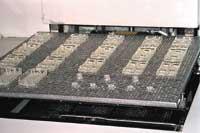
However, the difference is that the ways in which the prototype will be manufactured and later the part are completely different. The process of obtaining the experimental prototype is shorter and, as in the previous logo, the final piece will be made by mold. In this case silicone will be used for mold making. Surround the piece with silicone, open it when fully hardened, remove the piece made with stereolithography and then close insert the polyurethane. There are no differences between this prototype and the actual piece.
These technologies have been used so far by the automotive, telecommunications and appliances sectors, but more and more sectors need these techniques, such as medicine.
Ready to market
One of the advantages of stereolithography is its accuracy. In addition, rapid prototyping techniques reduce the time to market the product. If the parts are defective they are detected earlier, so the cost can be significantly reduced.
In addition, often the experimental prototype, that is, the one that has no differences with the real piece, is performed when requested to advance marketing campaigns or to detect its impact on the market. Therefore, the advantages that prototypes offer economically are enormous.

STL files
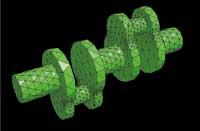
This format is called stereolithography in English. These STL files are used in computer procedures for manufacturing three-dimensional parts. Therefore, they store the geometry information of a three-dimensional solid.
The geometry of solids is defined by triangular surfaces, i.e. representing the shape and size of the solid to computer programs. This type of files, in addition to part design, can be used to determine the structures required in architecture and engineering.
Spectacular applications
Prototype technology is applicable not only to industry, but also to many other fields. In medicine, for example, it can be combined with internal body scan techniques.
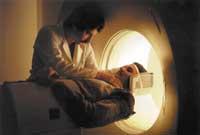
If a scan is done to a brain cancer patient, the result is just a computer file. This file contains the information of the internal structure of the head and can be converted into STL format. From the file of this format, and using the techniques used by the company Idelt, a prototype head with wax or other material can be made. This is only a copy procedure of the head.
This copy of the head will include an exact copy of the tumor, so the surgeon can know the most appropriate way to use the scalpel before entering the operating room.
This increases the effectiveness of the operation, the doctor finds no surprises and slightly decreases the risk of the patient.

Gai honi buruzko eduki gehiago
Elhuyarrek garatutako teknologia



